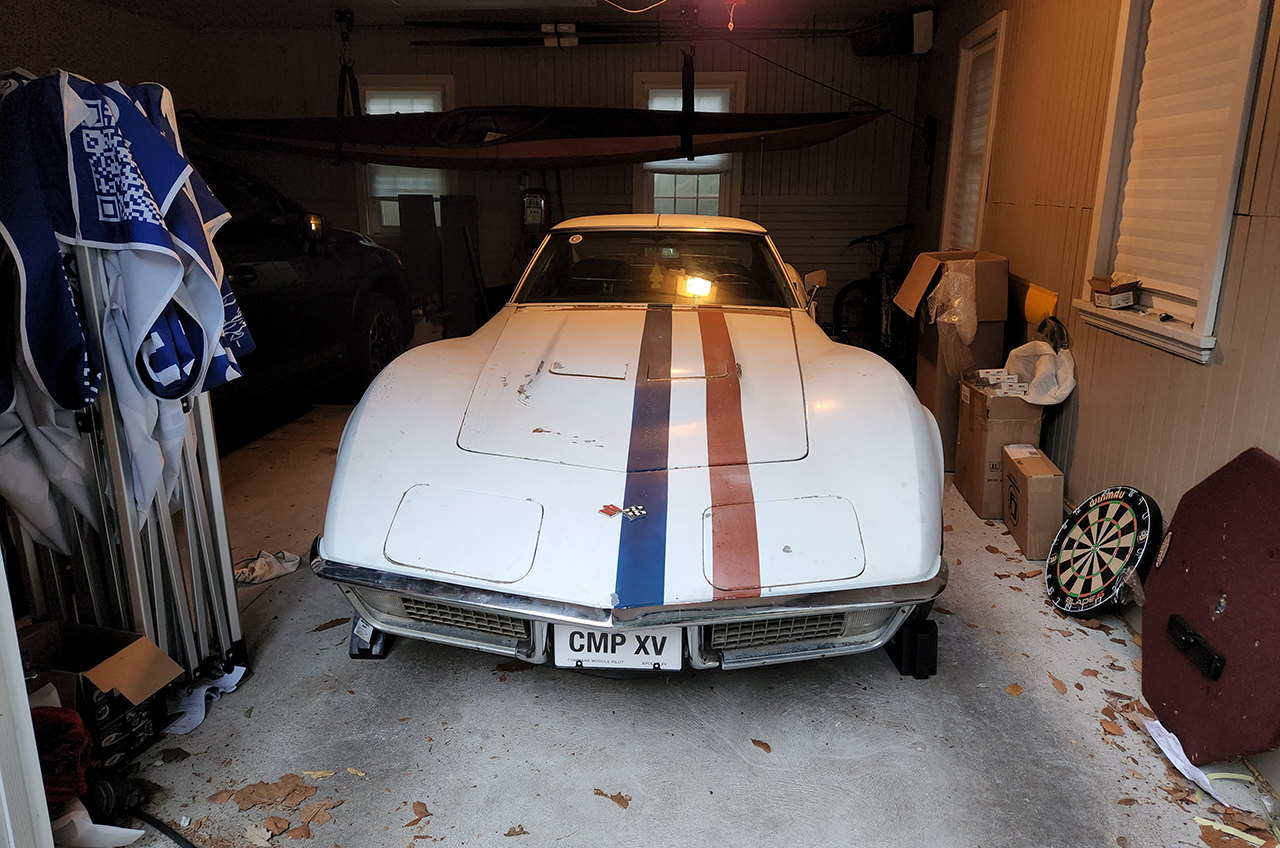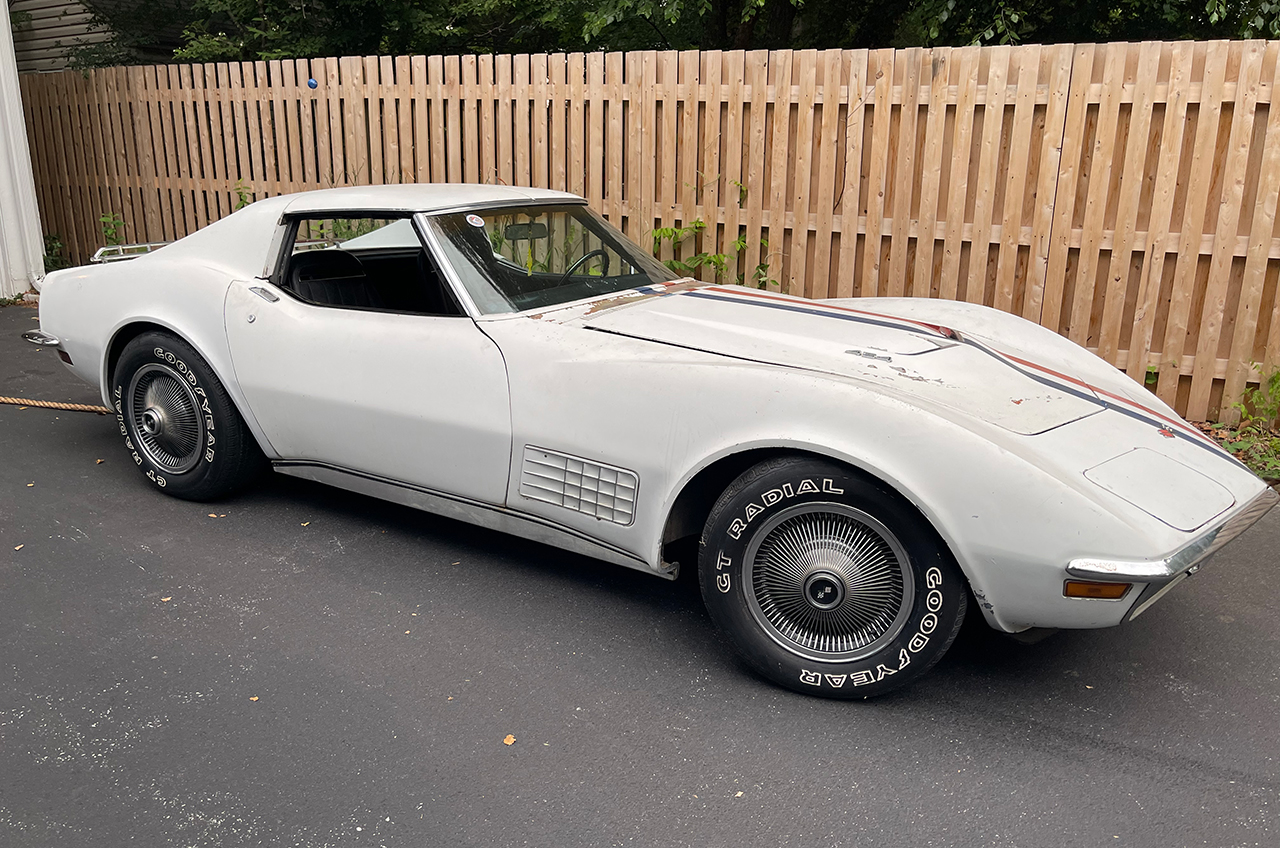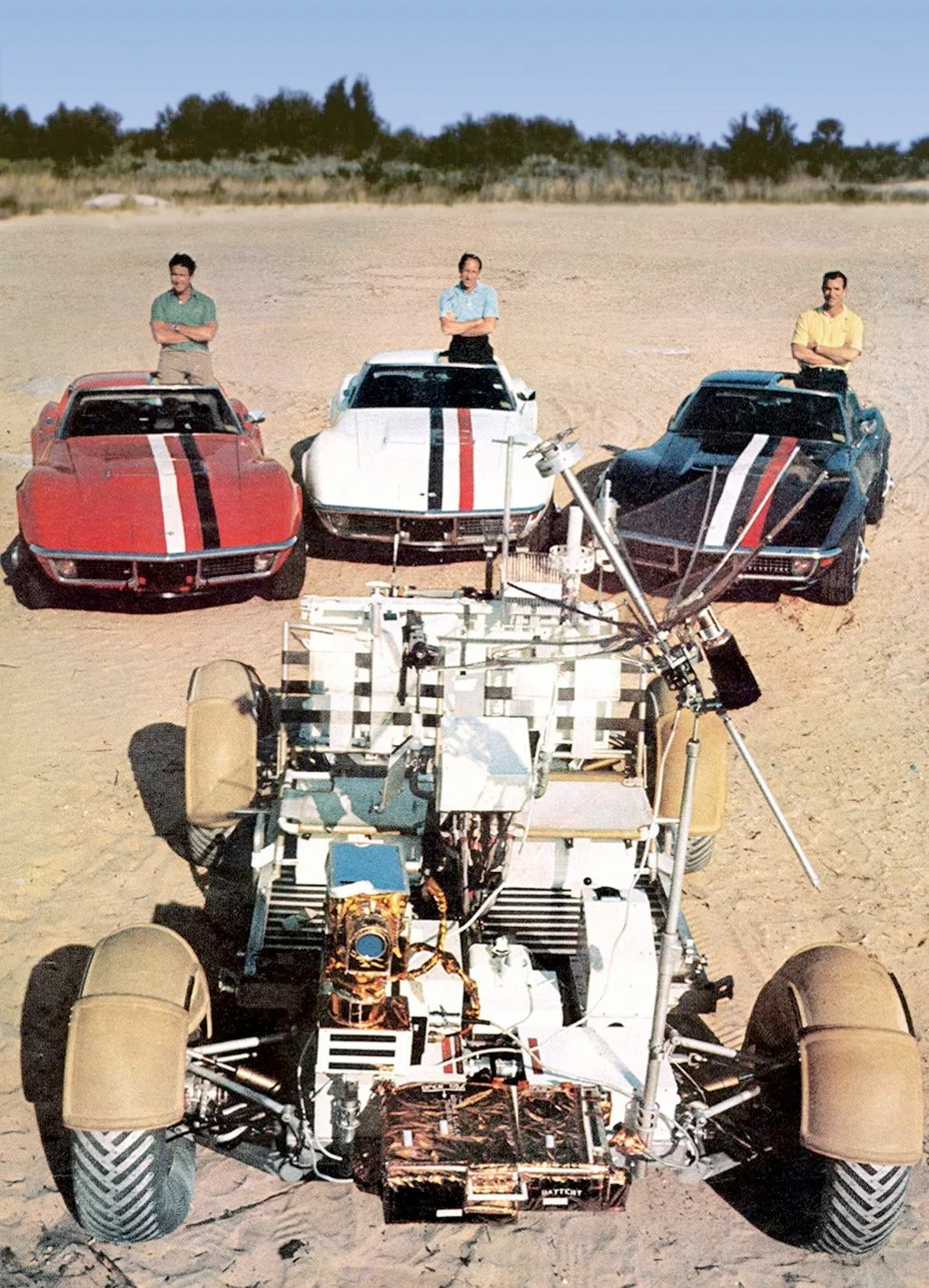Astronaut's grandson partners on project to restore rare Apollo 15 'AstroVette'
One of only three remaining Corvettes customized for the astronauts is set to inspire again.

A rare customized Corvette is set to receive a full restoration, 51 years after its one-time owner launched with the first car to be driven on the moon.
Project AstroVette Endeavour aims to return a classic white coupe to its fresh-off-the-factory-lot 1971 condition, when it was it was one of three matching Corvettes leased to NASA's Apollo 15 crew. The restoration is a joint effort between Will Penczak, grandson of command module pilot Al Worden, and Luna Replicas, the space collectibles company licensed to reproduce the late astronaut's flight jacket.
"It's a unique preservation of what we deem as a very important part of American history," said Penczak in an interview with collectSPACE.com. "It is a symbol for a very important chapter in aerospace history, as well as my own family's history."
Apollo 15 was NASA's fourth mission to land astronauts on the moon. The mission featured the first lunar roving vehicle and the first deep-space EVA (or spacewalk), the latter performed by Worden on the way home from the moon.
Related: Al Worden, Apollo 15 astronaut (reference)

Penczak and Luna Replicas proprietor Max Kaiserman purchased Worden's Vette five years after it was rediscovered by a collector. After years sitting out in a field, the coupe needs work to not just bring it back to its former glory, but to make sure it survives for many years to come.
"In its current condition, it will continue to deteriorate," said Kaiserman. "It is not only the consumables — the rubber goods, seals and gaskets — that need to be replaced, but we are also looking at some fiberglass and paint damage because it sat outside for so long."
Breaking space news, the latest updates on rocket launches, skywatching events and more!
"There is a certain level of invasive preservation techniques, or restoration, that needs to happen. It cannot just be preserved as it is as it's a little too far gone for that," he said.
Al's AstroVette
Worden's AstroVette is one of only six that were customized. Other astronauts drove Corvettes under a special $1 lease deal struck with General Motors (GM), but only two of the crews' coupes had custom paint jobs.
Before being assigned to fly on Apollo 15, Worden, Dave Scott and Jim Irwin first served as the backup crew for Apollo 12, the first crew to have matching Vettes.
"They did everything together, driving identical gold-and-black Corvettes with their crew positions painted on the sides. They showed the world that they were a tightly bonded team," Worden wrote in "Falling to Earth," his 2011 autobiography authored with Francis French. "Our crew saw those Corvettes not only as a deliberate challenge, but also a little tacky. So we did something a little different."

The Apollo 15 AstroVettes were red (Irwin), white (Worden) and blue (Scott) with corresponding stripes to complete the American flag motif. The colors were the same used to label the three crew members' meals and personal items aboard the Apollo 15 spacecraft.
The leases on the cars expired after a year, at which point they were returned to GM and, in turn, resold to new owners. Despite having been driven by astronauts and being one of only six custom Corvettes created for the spacemen, only three are known to still exist today.
The same collector who found Worden's AstroVette had previously bought Apollo 12 astronaut Alan Bean's AstroVette in 1971, and acquired Scott's Apollo 15 blue coupe in 2018.
"I reached out to him in 2020," said Penczak. "I was visiting my parents when they were living in Houston and ended up organizing a meeting. I went out to his house in Central Texas and got to see Al's car along with the other cars that he has."
"That's when the dream came alive, when he said I could be an heir to [the Vette], and here we are two years later," he said.
Vette in view
Just as Worden's flight on the Apollo 15 command module Endeavour was shared with the world, Penczak and Kaiserman intend Project AstroVette Endeavour to be on full public view.
"Our goal is to make this accessible," Kaiserman told collectSPACE. "A YouTube channel is being planned and possibly a documentary. Will is is working with some creative folks who really want to make a video out of this, following our progress and telling the history."

Throughout the restoration and after, when the Corvette is like new, Penczak and Kaiserman hope the car can serve as a "tool of inspiration," especially helping to engage others in STEM (science, technology, engineering and math). Though Worden was not reunited with his car before he died in 2020, he had been active in organizations such as the Astronaut Scholarship Foundation and he helped to establish his own fund, the Endeavour Scholarship, to inspire students to pursue careers as engineers and explorers.
Penczak and Kaiserman are conducting the initial restoration work themselves, but with a total potential cost of upwards of $150,000 to $200,000, they are planning public fundraising activities and hope to recruit corporate partners. The hope is to have the Corvette ready in time for the 53rd anniversary of Apollo 15 in two years.
"We want as many people to be able to see the car as possible and be inspired by it. I mean, if that means even charging to sit in the driver's seat and take a picture, we are going to do that," said Kaiserman.
Ultimately, Penczak and Kaiserman want to take the AstroVette on a 250,000 mile (400,000 kilometers) road trip all around the country.
"We want to drive it as many miles as it takes to get to the moon," said Penczak.
Follow collectSPACE.com on Facebook and on Twitter at @collectSPACE. Copyright 2022 collectSPACE.com. All rights reserved.

Robert Pearlman is a space historian, journalist and the founder and editor of collectSPACE.com, a daily news publication and community devoted to space history with a particular focus on how and where space exploration intersects with pop culture. Pearlman is also a contributing writer for Space.com and co-author of "Space Stations: The Art, Science, and Reality of Working in Space” published by Smithsonian Books in 2018.
In 2009, he was inducted into the U.S. Space Camp Hall of Fame in Huntsville, Alabama. In 2021, he was honored by the American Astronautical Society with the Ordway Award for Sustained Excellence in Spaceflight History. In 2023, the National Space Club Florida Committee recognized Pearlman with the Kolcum News and Communications Award for excellence in telling the space story along the Space Coast and throughout the world.

